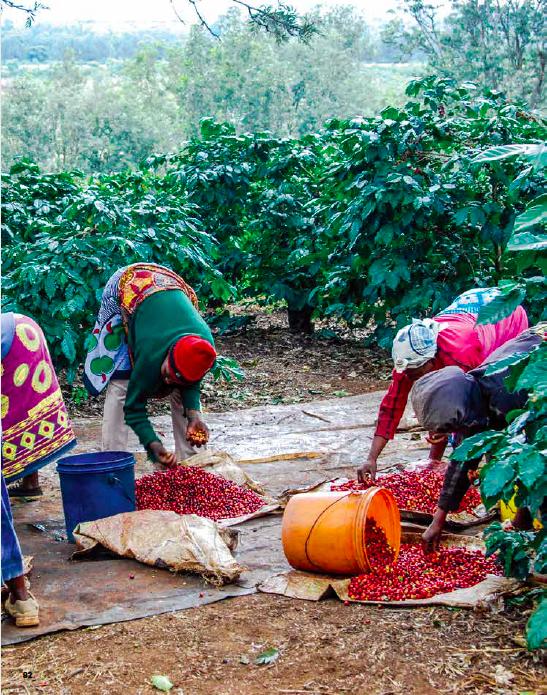
“Welcome to Tanzania”
“Karibu” is how I’m greeted, in local Swahili dialect. “As- ante sana” is the reply. “Thank you very much.”
And then I wait for what seems like ages in Dar es Salaam’s cramped, bustling international airport. It’s August, wintertime for the southern hemisphere nation, but that means relatively little at sea level on the coast so close to the equator. Dar is a hot city, and humid. The air is heavy with vehicle emission pollution. During rush hour, it can take you 2 hours to reach the heart of downtown or the coastline from the Julius Nyerere International Airport, a mere 11km on a 6-lane divided highway. Connecting flights from Dar into the recently-completed Mbeya airstrip fly infrequently, once or twice per day. If Dar es Salaam is the cultural and business center of Tanzania, Mbeya is its agricultural heartland, nestled in the seam of fertile moun- tains near the country’s southwestern border with Zambia and Malawi. Landing on the afternoon of August 8 of 2015, I’m greeted by a produce festival in one of the city’s dusty gathering squares. The eighth day of the eight month, Nane Nane Day (pronounced “nah-nee,” the word literally means “eight” in Swahili) is a harvest festival, celebrating the importance of farmers.
Conveniently, farmers are exactly whom I’ve come to see. Luckily, paved roads are relatively newcomers to the vast Mbeya region, which stakes claim as Tanzania’s leading producer of maize, rice, bananas, beans, potatoes, and wheat. The hillsides are also dotted with pineapples, avocado plantations have sprung up in recent years, and around sharp turns you can find hidden valleys filled with newly planted tea. Coffee, however, is what I’ve been sent to find.
It turns out there’s quite a lot of it in the area. While Mbeya city and beyond are often classified under the umbrella “Mbeya” region designation, microregional differences are stark to stay the least. Mbozi, around 70km west of Mbeya city, spends the harvest months as a dust bowl, and coffee here grows primarily under full sun on baked fields. Fermentation times are brief due to the high temperatures, and many producers have chosen to upgrade from hand-crank pulpers to Penagos eco-pulpers and conserve water by skipping fermentation altogether.
However, in nearby Rungwe, about 50km south of Mbeya, the hills remain lush during the dry season, and mountain streams feed washing stations where coffee may ferment underwater for long durations. Investment into centralized wash- ing stations has been limited, but most larger exporting firms are encouraging smallholders to contribute cherry rather than process at home. This is a bit of a double-edged sword: the smallholder can add value by home processing, but the risk of inconsistency and variation in techniques can cause problems for specialty markets. Cherry processed at centralized stations may be of higher quality, but may not contribute as many Tanzanian Shillings per pound to the farmer.
Despite impressive agricultural productivity in Mbeya and neighboring Ruvuma regions, remoteness keeps their producers aloof from international attention. Coffee is predominantly grown by smallholders who frequently remain faceless and nameless to their buyers. The parchment is bulked, sorted by screen size (AA, AB, PB, etc.) and sold at the weekly auctions in Moshi, nearly 1,000km away.
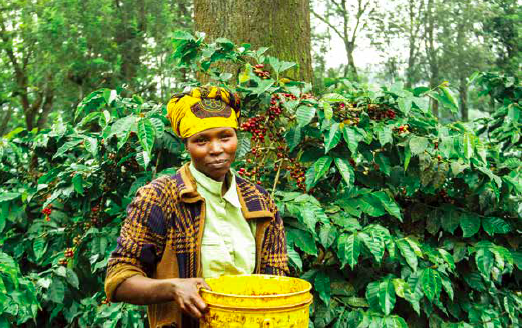
The southwestern reaches of Tanzania are infrequently visited by tourists — while there are numerous wildlife reserves throughout central and western Tanzania, and Lake Malawi boasts an incredible population of tropical cichlid fish, the country’s healthy tourism industry is primarily fueled by popular locations in the north and east. Zanzibar floats just off the coast of Dar es Salaam on the eastern seaboard, the Serengeti plains and Lake Victoria ignore international borders in the north, and Mt. Kilimanjaro splits the sky in the northeast, skirting to the edge of Kenya.
Near Kili, estates at lower elevations in the foothills surrounding the cities of Moshi and Arusha sell their roasted beans to local safari lodges and supermarkets. The mountain, usually shrouded in clouds, frequently makes an appearance on the packaging.
West of Arusha, past Lake Manyara and Mto wa Mbu (“Mosquito River”), and up over the ridge of the Rift Valley’s wall, the Ngorongoro caldera looms, the broken shell of an ancient, ruptured volcano. Inside its walls, a wildlife conservation area, cut off from much access to the outside world, is home to hordes of zebra, eland, gazelles, and wildebeests, two prides of lions, hyena, hippopotami, and scores of other local birds and mammals, including a small population of black rhino. The Maasai, among the regions more visible ethnic groups with distinctive red flannel robes and unchanged traditions of nomadism, are frequent visitors, passing through the crater with their goat and cattle herds in tow.
The outer walls of Ngorongoro are flecked with safari lodges, montane forests, and coffee farms. Estates here are often Rainforest Alliance certified, preserving native flora and pro- viding natural pathways for elephants and water buffalo in and out of the caldera. While permanent full time employment is an important aspect of keeping a well-run estate farm operational year-round, the local labor force must be sought out during harvest, as a farmer can be quickly overwhelmed by ripening coffee. Beyond the wages earned for plucking buckets full of red coffee cherries, some estates provide temporary residences as well as land for planting subsistence crops like beans, which provide a secondary benefit by fixing nitrogen in the soil.
Deep Rooted Coffee History
Coffea arabica has been commercially grown in Tanzania for well over a hundred years, but it may come as a surprise that Tanzania has a deep cultural heritage with arabica’s parent, Coffea canephora — robusta.
Tanzania’s story with coffee in fact predates written history. In the country’s far northwestern coffee lands, the Haya people of what is now the Kagera region, bordering Rwanda and Burundi, cultivated indigenous Robusta. The berries were boiled and smoked, or used as gifts and a form of currency. Arabica first arrived from the French-held island of Réunion, where the local Spiritan bishop resided. Zanzibar’s Sultan gave the Euro- pean missionaries his blessing, and shortly thereafter the Spir- itans made their way to Bagamoyo on Tanzania’s central coast, as early as 1868. The local leadership offered the Catholic sect some land, purportedly to aid the survivors of slavery.
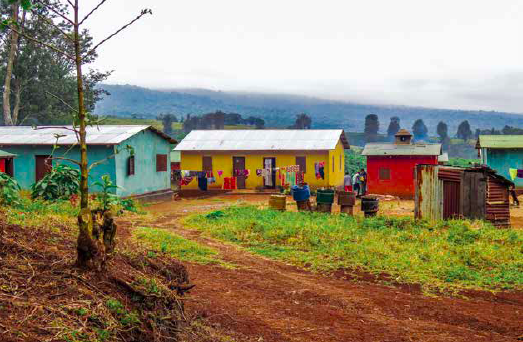
By 1877 Bagamoyo’s Catholic population was booming and the school had a garden where coffee from Réunion, Madagascar, and India was grown. Colonial governments like the Germans, beginning in 1885, and the British after them, attempted to force arabica production as a cash crop on the Haya and other regional ethnic groups. The Haya offered the strongest resistance — they disliked arabica and they defi- nitely disliked European-instigated commercial cultivation.
Commercial coffee took root more easily near Kilimanjaro, spread by the Spiritan missionaries in the early 1890s. Arabica was planted in 1902 in Moshi and cultivated by the local Chagga ethnic group, under colonial duress. This established a local economy that eventually organized into an arabica auction system, still in place in Moshi today.
After World War I, the British absorbed German East Africa, and renamed it Tanganyika, accelerating coffee cultivation. In 1925, the first Tanzanian coffee farmer cooperative was established, and by 1950 there were more than 400 such groups in the country.
Zanzibar received independence from Britain in December of 1963 and the African population revolted against the Arab sultanate the following month. After months of violence and upheaval, Zanzibar united with Tanganyika to form the United Republic of Tanzania (blending the name of the two previously independent nations).
In 1977, Tanzania rapidly nationalized former colonial holdings and redistributed lands and properties. Agricultural cooperatives dissolved under the weight of a balloon- ing bureaucratic government that was rife with corruption.
For half a decade, until 1982 when cooperatives re-organized under governmental control, the Tanzania Coffee Authority bought and sold all coffee in the country. As subsidized government-controlled cooperatives sank deeper into debt, independent parties were able to step in where cooperatives lacked assets and began to purchase coffee directly.
Reforms in the government and coffee sectors allowed increased privatization beginning in 1990 and culminated with the formation of the Tanzania Coffee Research Institute (TaCRI) and the Tanzania Coffee Board (TCB) in 2000-2001. The TCB, working on a strategic coffee development plan lasting from 2011 to 2021 to double production, missed its 2017 target by 41 percent, though the ten years between 2007-2017 did see an overall average increase in export volume.
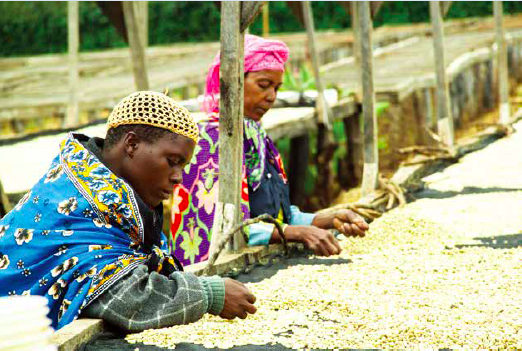
Unique Auction Platform and Recent Changes
The TCB Auction held in Moshi, in the far northeastern part of the country, takes place weekly during the harvest season. Bidders are licensed by the government to participate as exporters to the international market.
Prior to liberalization in the 1990s, payment to farmers would occur in three stages: parchment delivery, premium for cup quality, and a third payment if the auction price had been underestimated. In the old system, auction prices were reflective of quality and demand, and created a degree of price transparency to the farmer. However, until the auction was completed, the entire market risk also rested on the farmers shoulders; they bore the brunt of unpredictable swings in market prices and inefficient export logistics beleaguered by bureaucratic roadblocks.
By the mid-1990s, much of Tanzania’s coffee, particularly that produced by smallholders, was purchased in full by independent brokers and exporters prior to auction. In this liberalized market climate, the auction no longer served as an efficient price discovery mechanism. Growers were left in a difficult position between lack of market knowledge (and the resulting unevenly balanced negotiations) on the one hand, with immediate cash payment for product on the other. This unsavory situation to be sure left smallholders practically powerless.
Interestingly, this coffee — even when purchased directly — still moved through the auction in Moshi. Exporters bid on their own coffees, repossessing what was already theirs. In the rare bidding war between exporters, the high prices didn’t matter because the exporter was simply going to be paying themselves for their own coffee. The auction was effectively broken.
As failing cooperatives disbanded, farmers formed loose Farmer-Producer Groups (FPGs) to sell their harvest to whomever came to call. Without a reliable auction price, distrust for parchment payments was rampant and loyalty to a trader more or less non-existent.
All this changed in the blink of an eye in January of 2018. Over 90 percent of Tanzania’s coffee is grown by smallholders, and as of last year all smallholders are required to be cooperative members who contribute their coffee directly to the auction.
On January 14 2018, Tanzania’s Prime Minister Kassim Majaliwa dissolved the Tanzania Coffee Development Trust Fund, claiming it was redundant and depriving farmers of their money. At the same time, he directed the revocation of all licenses for traders purchasing coffee directly from farmers, reinstated cooperatives, and mandated all coffee be purchased by exporters through the auction, effectively eliminating the possibility of direct trade from farmer to exporter.
The idea was to eliminate smuggling, particularly of robusta. Numbers floated by some government officials suggested up to 60% of robusta was crossing the borders illegally. There was also motivation to return higher profits to small farmers, but the execution was inherently flawed as bureaucrats, rather than industry experts, were charged with changing the systems.
What followed was chaos. Cooperatives were left with little time to prepare for the upcoming harvest, and multinational and private buyers completely pulled up roots, abandoning their washing stations and dry mills. Coffee dried on the trees, and coffee arrived late to auctions and markets. After a year of exclusive auction trade, coffee volumes in Tanzania still dropped. PM Majaliwa backpedaled, reinstating the possibility of international direct exports, requisitioned additional seedling plantings, floated the concept of regional auctions, and banned the export of unprocessed coffee in January of 2019, hoping to increase production, prevent smuggling to nearby countries like Uganda and Kenya, and add value to exported goods. The country has partnered with Cafe Africa, an NGO seeking to train agronomists in Tanzania and train farmers.
Of particular interest to specialty buyers will be the possibility of direct trade channels again. However, in the new system, a government committee (again, not industry experts) will be given the final say on whether the agreed upon price for a direct export is allowable.
Speaking with a Tanzanian farmer on the condition of anonymity, his frustration was obvious. “The private sector has been completely left out in the cold,” he told me. “The government is trying to apply standardized principles of other commodities, but lack an understanding of the complexities of coffee.” This farmer is lucky, he runs a sizeable estate, which to some degree has been insulated from the whiplash decisions affecting smallholders. However, even for him, the new laws have had a “huge impact.” There’s a “liquidity crisis, and Tanzania’s dollar reserves have dried up. We’re hit with nuisance taxes, as businesses are heavily scrutinized and foreign aid has pulled out. Restrictions on available fertilizers and pesticides mean that estates looking to modernize or improve yields lack access.”
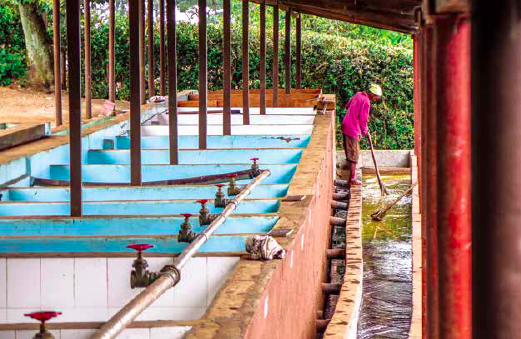
Coffee growers face an uphill battle. With coffee prices in a sustained crisis on the world market, even a national auction and agronomy improvements cannot elevate the profit enough for some farmers. “You have to pick which side of the market — volume or quantity — and not everyone can do that.” In this difficult market, coffee growers are prone to abandon the crop. Among the rising stars of East African agricultural exports is the avocado. Farmers are reporting profits of up to 10 times higher than using the same land to grow coffee. Due to coffee’s current market price, and the avocado tree’s high yields and low maintenance costs, less than ten mature avocado trees can equal the income of up to 500 coffee shrubs. In February of 2019, one of Tanzania’s largest avocado exporters, Africado, secured an additional 2.5 million euros to scale up. The future of coffee in a crashed market with a pending avocado boom seems bleak.
Uncertainty in the Future
What remains for Tanzanian coffee farmers is in many ways sadly representative of much of the rest of the globe. Smallholders remain disconnected from both support structures and the consumer market. Government overreach and even the work of NGOs more frequently serves to reinforce existing power structures than it does to undermine them. And all the while changing climate, reductions in arable land as rare earth minerals are mined and sold to foreign investors, and the dark cloud of catastrophically low arabica futures-market prices loom on a rapidly approaching horizon.
Farmers in Tanzania as with the rest of the globe need to achieve a profit after the cost of production of coffee, or they will either abandon the farm or turn to a crop that is better suited for making a living. Many smallholders and subsistence farmers may also need some basic financial education to improve their ability to invest in their farms smartly and to save for the future. Ongoing research must continue and accelerate, yet equally important is information dissemination. If new technology emerges but is unavailable, then of what use is it? Without investment from consuming markets in higher prices to farmers, a commitment to overcoming corruption and engaging in traceable supply chains with sustainable growth structures, Tanzania may all-too-soon join the list of former-producers, once famed for exquisite coffee, now bereft of the crop.









NO COMMENT